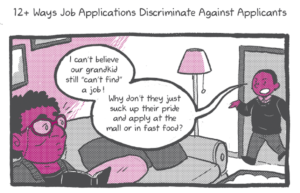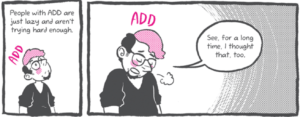Originally published on The Huffington Post and republished here with the author’s permission.
(Content warning: suicide)
I wanted to write about something that the transgender community and its allies are often afraid to discuss. Those who want to drive transgender people into the closet, legislate against us, and stigmatize us, talk about all the time in order further marginalize us. It is literally a matter of life and death.
It is suicide.
People know that transgender people are at a higher risk of suicide, but why this risk is higher is often not understood by the public, or misused by people who wish us further harm. The statistic that 40% of transgender people have attempted suicide is used all the time to justify all sorts of things that have absolutely zero basis in science.
Why transgender people are at risk is something that has actually been studied in great detail by psychologists and sociologists. They have found many of the same factors increase risk across multiple peer reviewed studies.
1. Rejection by friends and family increases suicide risk.
Transgender people who are rejected by their families or lack social support are much more likely to both consider suicide, and to attempt it. Conversely, those with strong support were 82% less likely to attempt suicide than those without support, according to one recent study. Another study showed that transgender youth whose parents reject their gender identity are 13 times more likely to attempt suicide than transgender youth who are supported by their parents.
2. Discrimination increases suicide risk.
Transgender people in states without LGBT legal protections are at higher risk of suicide. Other studies have found that transgender people who have been discriminated against are at a higher risk of suicide. What makes this worse is that discrimination against transgender people in health care, employment, accommodations, and housing is very common. Even in places with legal protections for transgender people, like Washington D.C., cultural bias and discrimination remains.
3. Physical abuse increases suicide risk.
Transgender people who have been physically or sexually abused because they are transgender are at a higher risk of suicide. As the number of abusive incidents increases, the more likely the person is to have attempted suicide. The amount of abuse is also associated with the number of time suicide has been attempted. Again, studies on how often transgender people are assaulted show shockingly high levels of violence.
4. Being seen as transgender or gender non-conforming increases suicide risk.
People who are seen as transgender or gender non-conforming are more likely to have attempted suicide. Also, people who have had access to surgery which allows them to “pass,” such as facial feminization surgery, report qualities of life not significantly different from the general population. This is perhaps the most damning study, since it strongly suggests that when transgender people are treated the same as cisgender (non-transgender) people, the risk of suicide becomes no different than for anyone else.
5. Internalized transphobia increases suicide risk.
Internalized transphobia is when a transgender individual applies negative messages about transgender people in general to themselves. It’s not hard to find such messages in our culture, especially since a multi-million dollar smear campaign in Houston successfully convinced an uninformed populace that transgender people should be treated like rapists and pedophiles. When transgender people start applying such messages to themselves, the suicide attempt rate skyrockets.
6. Intersecting minority identities increases suicide risk.
Multiple studies have found that transgender people of color are at higher risk of suicide than white transgender people. This is a result of the combined effects of racial and gender identity discrimination.
Notice a pattern here? None of these risks for suicide are about being transgender. They’re about what is being done to transgender people. And therein lies the rub.
There’s nothing inherently wrong with being transgender .
There is something horribly, horribly wrong with the way we as a culture treat transgender people.
The U.S. Department of Health and Human Services has addressed the issue of suicide in LGBT populations, and reached the same conclusions on the actual causes of suicide in the transgender community:
Suicidal behaviors in LGBT populations appear to be related to “minority stress”, which stems from the cultural and social prejudice attached to minority sexual orientation and gender identity. This stress includes individual experiences of prejudice or discrimination, such as family rejection, harassment, bullying, violence, and victimization. Increasingly recognized as an aspect of minority stress is “institutional discrimination” resulting from laws and public policies that create inequities or omit LGBT people from benefits and protections afforded others. Individual and institutional discrimination have been found to be associated with social isolation, low self-esteem, negative sexual/gender identity, and depression, anxiety, and other mental disorders. These negative outcomes, rather than minority sexual orientation or gender identity per se, appear to be the key risk factors for LGBT suicidal ideation and behavior.
***
This doesn’t change the fact that people who push for discrimination against transgender misuse studies, and use “experts” who are proponents of reparative therapy for all LGBT people, and haven’t seen a transgender patient in 35 years. Their so-called logic is that if people weren’t transgender and didn’t transition, they wouldn’t commit suicide. This is the intellectual equivalent of suggesting we should prevent rape by making women wear burqas, chastity belts, and never letting them leave the house.
Their pray-away-the-trans “solutions” to bringing down the suicide rate in the transgender community are almost a guarantee of more suicides. Studies show religious counseling increases the suicide rate in LGB people. Reparative therapy has never been demonstrated to be successful on transgender people, isn’t approved by any psychological organization, has no guidelines on how to conduct it, and no standard metrics of success.
In other words, any attempt to suggest that the solution to the problem of suicide in the transgender community is to stop being transgender is nothing more than chaff. These individuals are more interested in enforcing their brand of Biblical morality on society than the actual well-being of transgender people.
They’re hoping that no one will read this article. They’re hoping that no one will think the problem through. What happens when you rape, beat, fire, evict, reject, isolate, demonize, and humiliate a class people on a daily basis? What happens when all of this is done by people in the name of God? Would you expect a group of people experiencing this to thrive?
Or would you expect 40% of them to try to find escape in oblivion?
Leelah was right.
If we want to end the scourge of suicide, it’s time we stop trying to fix transgender people.
It’s time to fix society.
(H/t to Sebastian Barr for his excellent literature review and blog.)
[do_widget id=’text-101′]
Brynn Tannehill is originally from Phoenix, Ariz and has written for OutServe magazine, The New Civil Rights Movement, and Queer Mental Health as a blogger and featured columnist. Brynn and her wife Janis currently live in Xenia, Ohio, with their three children. Follow her on Twitter @BrynnTannehill.
Search our 3000+ articles!
Read our articles about:
Our online racial justice training
Used by hundreds of universities, non-profits, and businesses.
Click to learn more





















